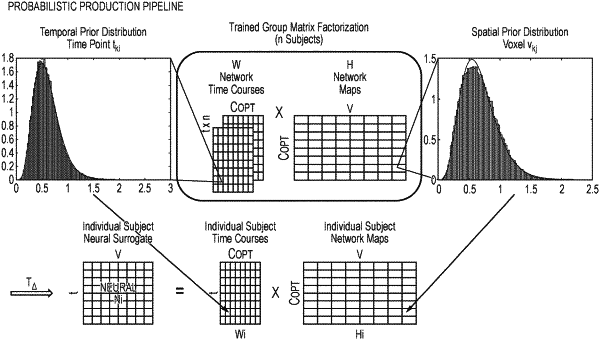| CPC G01R 33/4806 (2013.01) [A61B 5/4064 (2013.01); G01R 33/5608 (2013.01); G01R 33/56509 (2013.01); G06T 7/0014 (2013.01); G06T 7/30 (2017.01); G06T 11/006 (2013.01); G06T 2207/10088 (2013.01); G06T 2207/20081 (2013.01); G06T 2207/30016 (2013.01)] | 19 Claims |

|
1. A method for analysing a functional magnetic resonance imaging (fMRI) scan representing a time-sequence, comprising t time points, of images comprising v voxels, where each scan can be represented by a data matrix X∈
 t×v the method comprising: t×v the method comprising:modelling the scan data X as the convolution of a neural activation time course N∈
 +t×v and a haemodynamic filter Ψ, and performing an inverse operation to estimate N from X and Ψ; and +t×v and a haemodynamic filter Ψ, and performing an inverse operation to estimate N from X and Ψ; anddecomposing the neural activation time course N into multiple brain network components by representing N as the product of a first matrix H defining, for each component, a spatial map of the voxels belonging to that component, and a second matrix W defining, for each component, the time sequence of activation of that component during the scan.
|